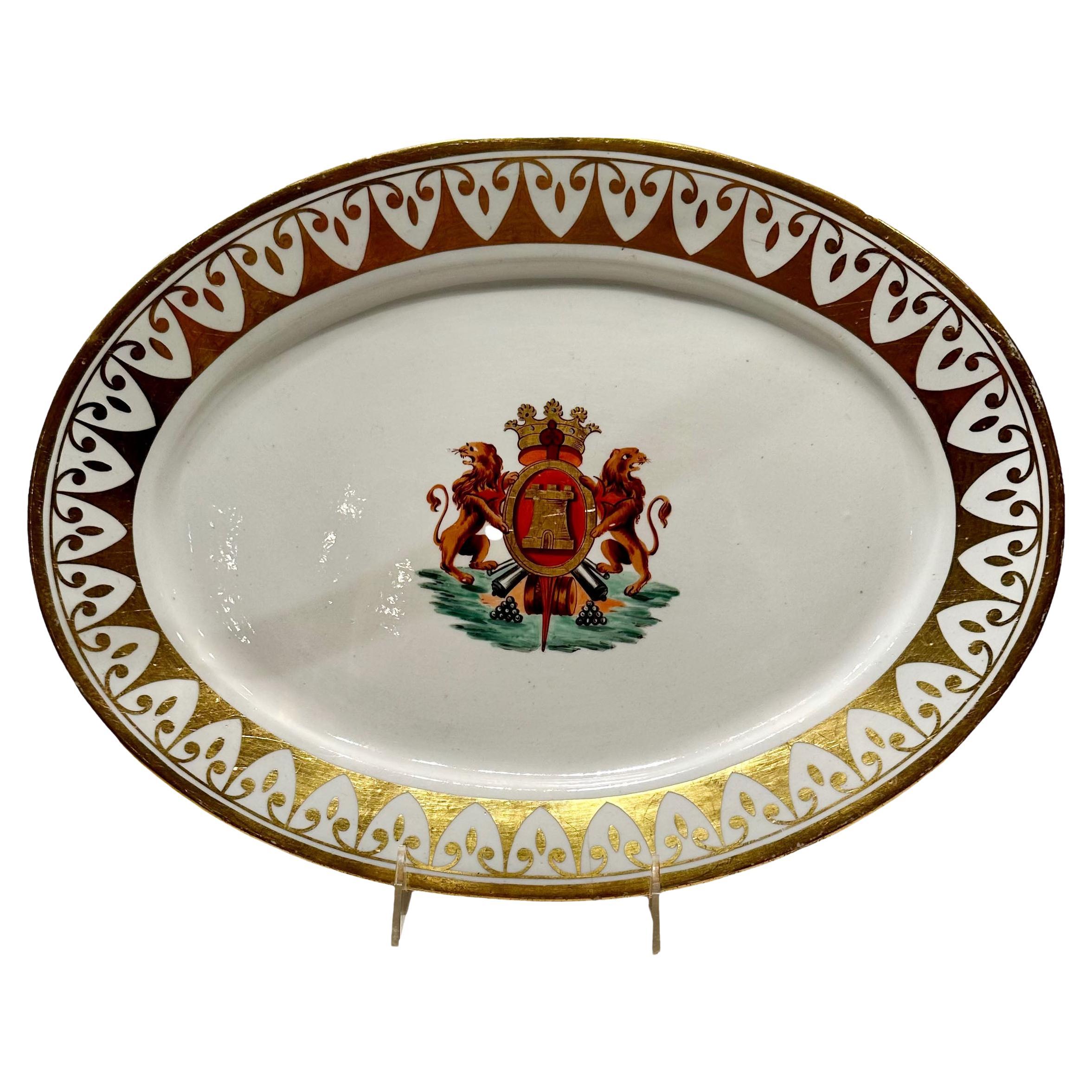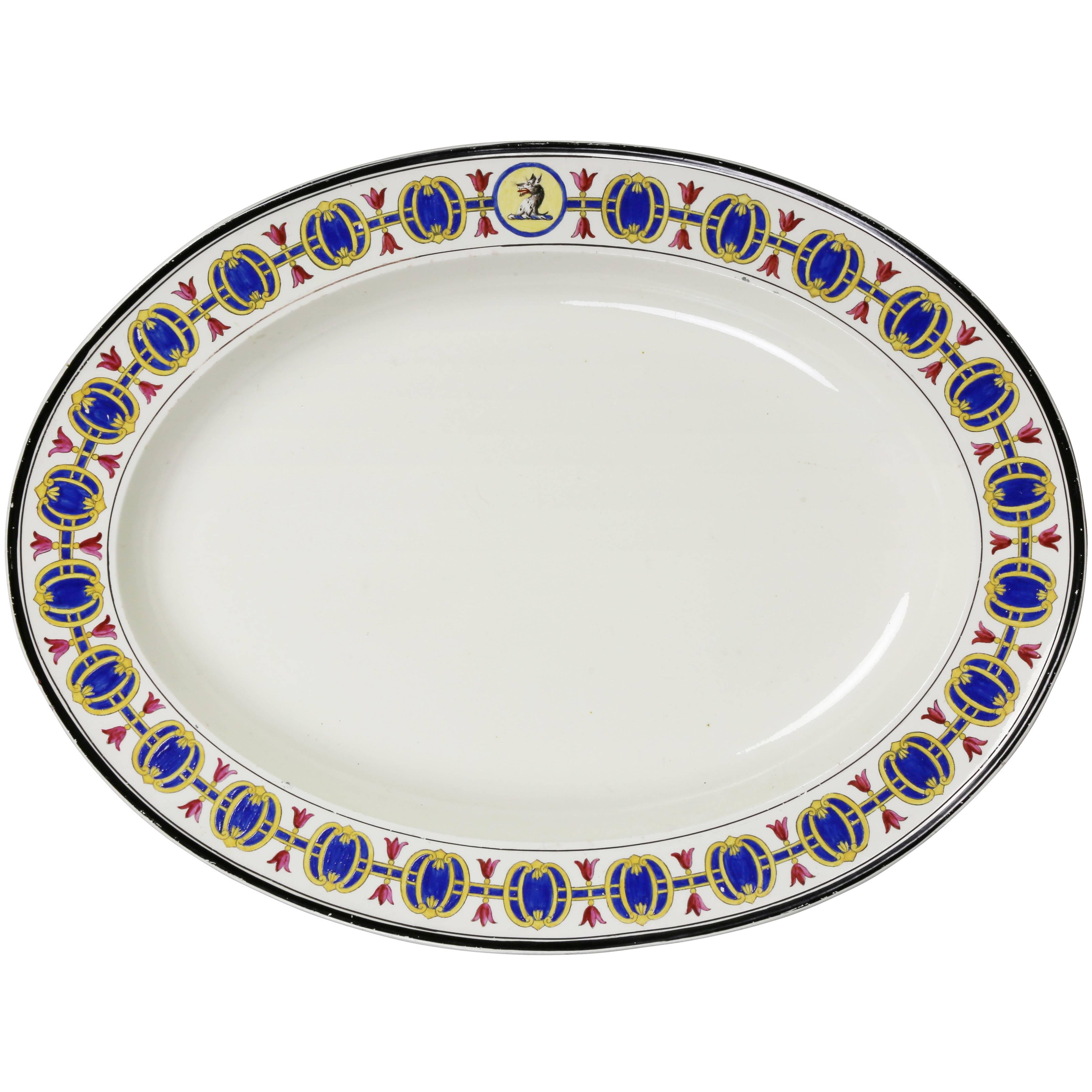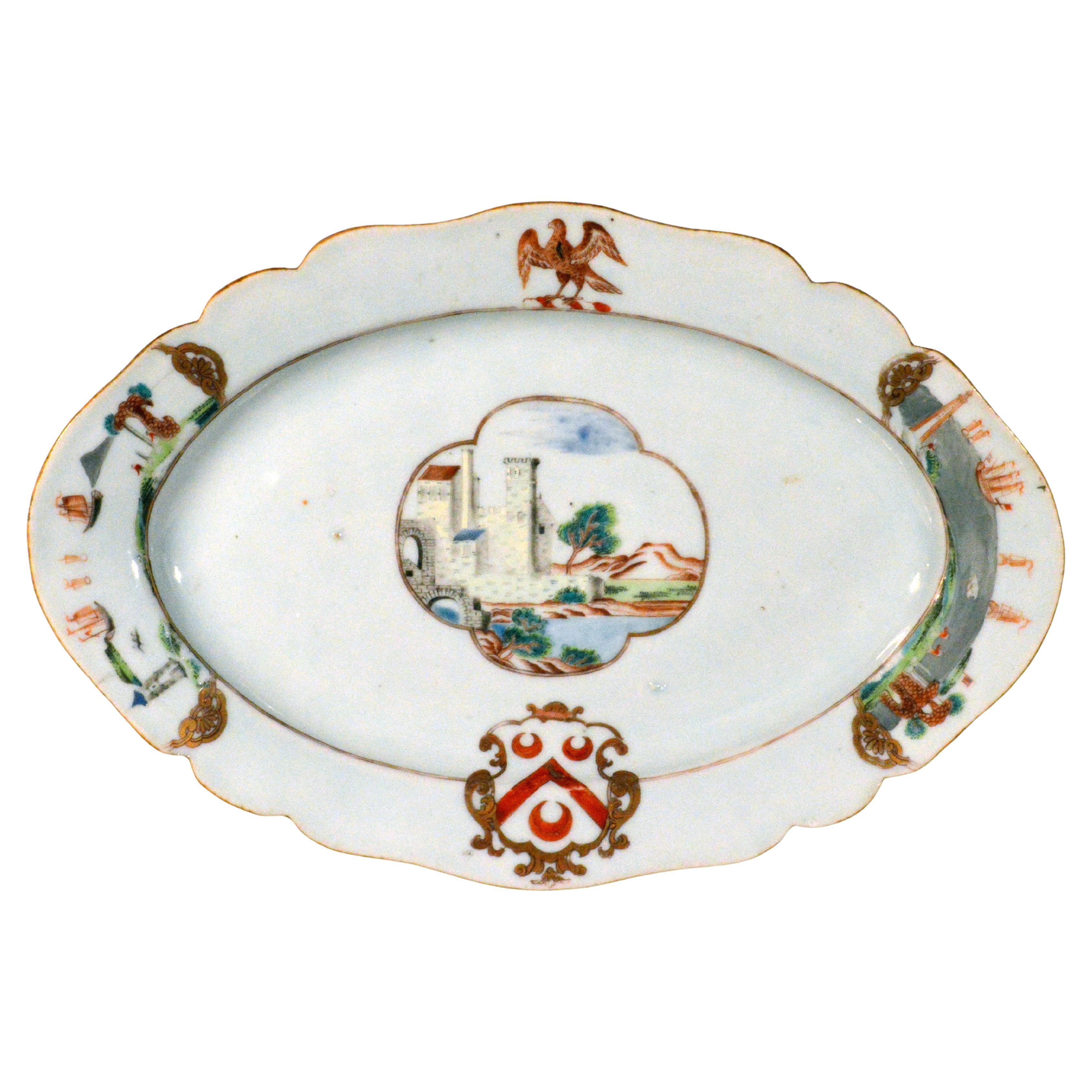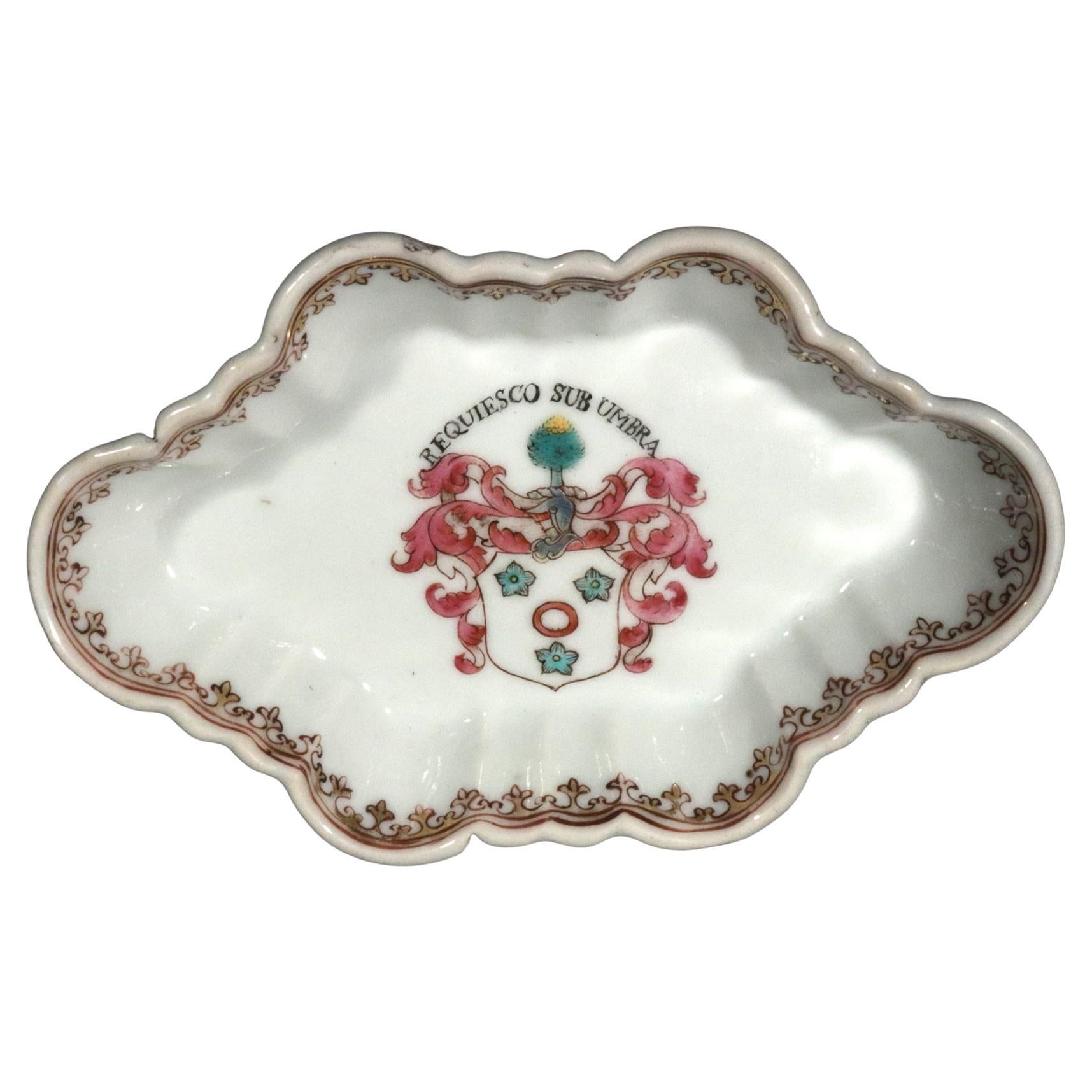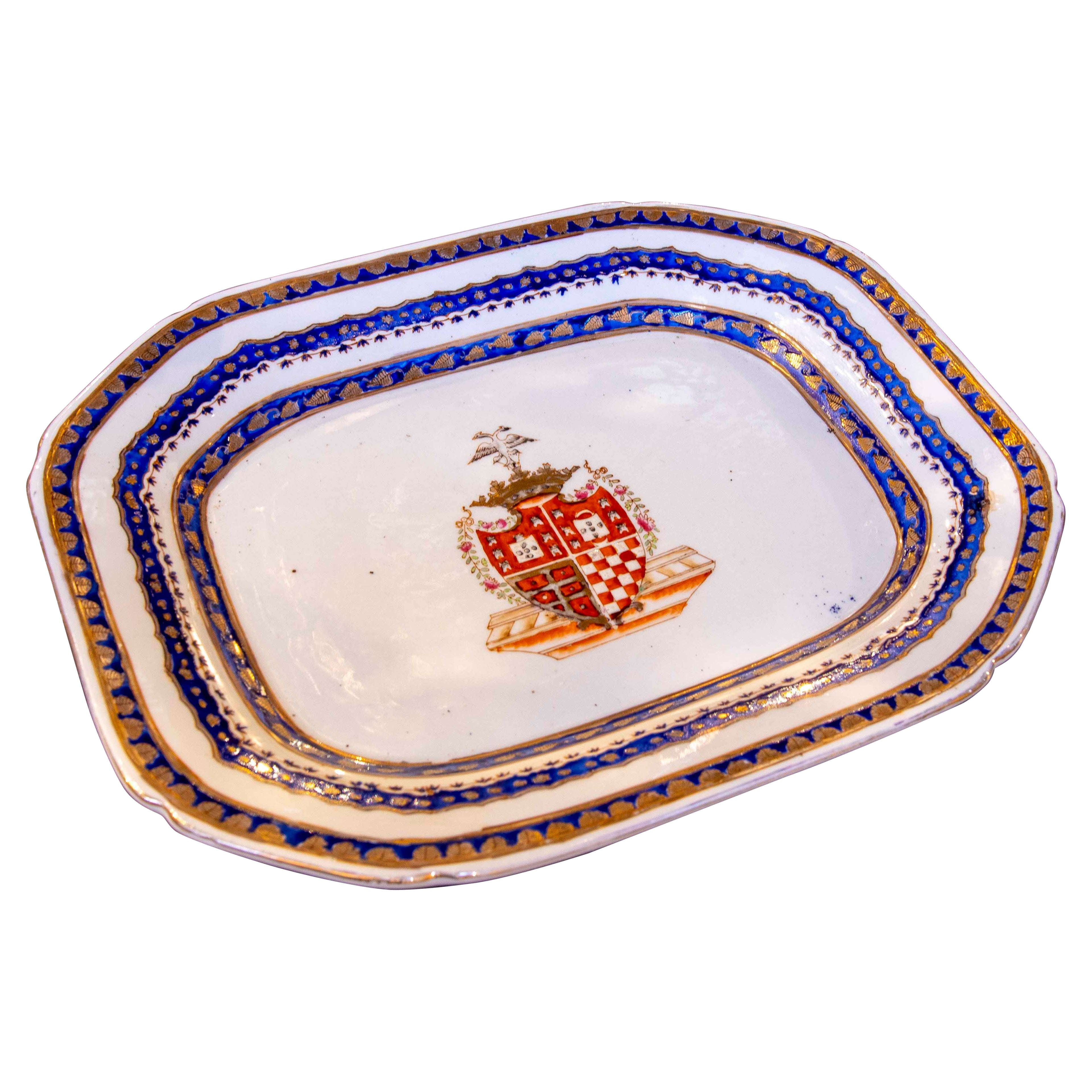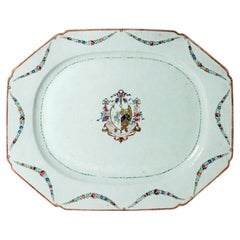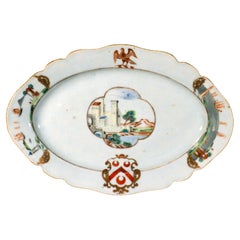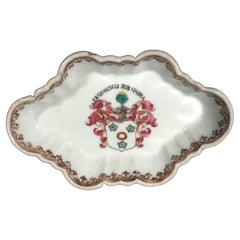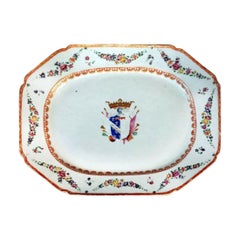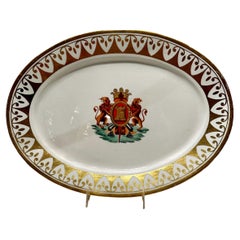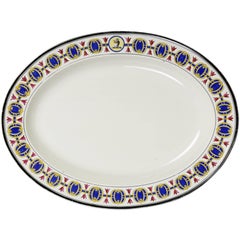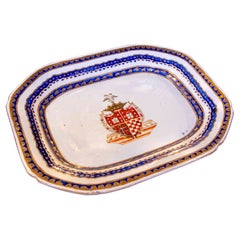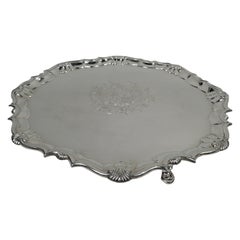Items Similar to Creamware Armorial Dish, Possibly Melbourne, Scottish Arms of Grant
Video Loading
Want more images or videos?
Request additional images or videos from the seller
1 of 10
Creamware Armorial Dish, Possibly Melbourne, Scottish Arms of Grant
$1,500
£1,145.04
€1,316.30
CA$2,110.77
A$2,347.26
CHF 1,232.83
MX$28,697.63
NOK 15,362.28
SEK 14,482.48
DKK 9,823.85
About the Item
Creamware Armorial Dish,
Possibly Melbourne,
Arms of Grant,
Circa 1800.
The large dish with a puce band on the border and a central coat of arms and a crest to the upper border. The arms are of the chief of the Grant's.
Dimensions: 13 3/4 inches across by 10 3/4 inches wide.
Reference: See creamware and pearlware: The Fifth Exhibition from the Northern Ceramic Society. An Exhibition on Show 18 May- 7 September 1986, The Stoke-on-Trent Museum and Art Gallery. Edited T.A. Lockett and P.A. Halfpenny. Page 75, #53 for a plate dated 1780. The authors suggest that the plate in the exhibition has been associated with the Melbourne group but mention that at that time no fragments have been discovered at the site.
The Arms of Grant.
According to the clan Grant website, the coat of arms is that of The Chief of Grant. These arms are the Chief's personal arms and should always be identified as such. Only the Clan Chief and his immediate family are authorized to display and wear the Coat of Arms. The mountain aflame depicted at the top of the coat of arms is the only portion of the coat of arms that other members of the clan are allowed to display, encircled by a buckled strap to indicate that the arms are not their own.
The Grant's ancient motto is Stand Fast!, which refers to a historical incident with the Norse King Haaken, considered to be a distant forebear of the Clan, according to the Clan's oral tradition.
As this story goes, Haaken was set upon by a group of enemies at which point he ripped a tree sapling out of the ground and used it to successfully hold off his attackers, all the while exhorting his supporters to Stand fast, or not back down from the battle. Stand Fast became the motto of his family and stems from this incident.
The crest: A mountain inflamed, proper represents Craig Elachie (pronounced K-ray-g-EL-uh-hee) the so-called Rock of Alarm, the gathering place for the Clan when the Signal fires were lit on its Summit to rally the Clan to battle.
- Dimensions:Height: 1 in (2.54 cm)Width: 10.75 in (27.31 cm)Depth: 13.75 in (34.93 cm)
- Style:Georgian (Of the Period)
- Materials and Techniques:
- Place of Origin:
- Period:1790-1799
- Date of Manufacture:1790-1800
- Condition:Wear consistent with age and use.
- Seller Location:Downingtown, PA
- Reference Number:Seller: ny7949-krr1stDibs: LU86106389463
About the Seller
5.0
Recognized Seller
These prestigious sellers are industry leaders and represent the highest echelon for item quality and design.
Platinum Seller
Premium sellers with a 4.7+ rating and 24-hour response times
Established in 1916
1stDibs seller since 2009
416 sales on 1stDibs
Typical response time: 3 hours
Associations
The Art and Antique Dealers League of AmericaAntiques Associations Members
- ShippingRetrieving quote...Shipping from: Downingtown, PA
- Return Policy
Authenticity Guarantee
In the unlikely event there’s an issue with an item’s authenticity, contact us within 1 year for a full refund. DetailsMoney-Back Guarantee
If your item is not as described, is damaged in transit, or does not arrive, contact us within 7 days for a full refund. Details24-Hour Cancellation
You have a 24-hour grace period in which to reconsider your purchase, with no questions asked.Vetted Professional Sellers
Our world-class sellers must adhere to strict standards for service and quality, maintaining the integrity of our listings.Price-Match Guarantee
If you find that a seller listed the same item for a lower price elsewhere, we’ll match it.Trusted Global Delivery
Our best-in-class carrier network provides specialized shipping options worldwide, including custom delivery.More From This Seller
View AllChinese Export Porcelain Armorial Dish- Morgan impaling Warton Coat of Arms
Located in Downingtown, PA
Large Chinese Export Porcelain Armorial Dish
Morgan impaling Warton Coat of Arms,
Circa 1780
A large Chinese Export rectangular platter with canted corners, floral swag border, a ce...
Category
Antique Late 18th Century Chinese Chinese Export Platters and Serveware
Materials
Porcelain
Chinese Export Armorial Porcelain Dish, Arms of Pole, circa 1745
Located in Downingtown, PA
Chinese Export armorial porcelain dish,
Arms of Pole,
circa 1745
The Chinese export armorial porcelain dish is painted with pane...
Category
Antique Mid-18th Century Chinese Chinese Export Platters and Serveware
Materials
Porcelain
Chinese Export Porcelain Armorial Spoon Tray, Arms of Hamilton
Located in Downingtown, PA
Chinese Export Porcelain Armorial Spoon Tray
Arms of Hamilton of Dalziel
Qianlong Period, Circa 1750–1760
This elegant Chinese export porcelain spoon tray is delicately shaped in a ...
Category
Antique 1750s Chinese Chinese Export Porcelain
Materials
Porcelain
Italian-Market Chinese Export Armorial Porcelain Dish, Marchesi di Sorbello Arms
Located in Downingtown, PA
The Coat-of-Arms on this Chinese Export armorial are for the Marchesi di Sorbello from a service ordered by Uguccione III Bourbon del Monte, 12th Marquis Regent of Sorbello (1737-1816).
He was the son of Guiseppe I (1690-1747) a successful and important diplomat for the King of Sardinia...
Category
Antique Late 18th Century Chinese Chinese Export Porcelain
Materials
Porcelain
Chinese Export Porcelain Armorial Dish with European Coat of Arms
Located in Downingtown, PA
Chinese Export Porcelain Armorial Dish,
Pseudo Continental Arms,
Motto- "His Ornari Aut Mori",
After a Meissen Porcelain Original Service,
Circa 1760
The Chinese Export armorial porcelain oval dish with overall Bianco Supra Bianco has a central Rococo armorial coat of arms centered with three garlands with the motto "His Ornari Aut Mori" below. The armorial surrounded by scattered flowers and four shaped gilt bordered panels on the shoulder with two bouquets of famille rose flowers and two of fruit.
The motto translates as To be adorned with these, or to die, referring to the three wreaths in the coat of arms, woven of olive, laurel and oak leaves. The three leaves representing sapientia, doctrina ac rei militaris peritia, "wisdom, learning and military expertise."
The reverse with a bamboo band with fruit and flowers with scattered flowers to the top, bottom, and each side.
The gilt rim on the border now rubbed.
Dimensions: 16 1/2-inch-wide x 13 3/4 inches deep x 1 1/4 inches high
Reference: The Choice of the Private Trader: The Private Market in Chinese Export Porcelain illustrated from the Hodroff Collection, David. S. Howard, 132-133, for a strainer & Dish from the same service. Howard says this is from a Chinese Export service that is a direct copy of an original Meissen porcelain service...
Category
Antique Mid-18th Century Chinese Export Platters and Serveware
Materials
Porcelain
Chinese Export Porcelain Armorial Crested Soup Plate
Located in Downingtown, PA
Chinese Export porcelain armorial crested soup plate,
circa 1765
The Chinese Export porcelain armorial plate has a flower festoon border at the rim and a spearhead inner border a...
Category
Antique Mid-18th Century Chinese Export Porcelain
Materials
Porcelain
You May Also Like
Coalport Coat Of Arms Platter
Located in Tampa, FL
Large Coalport platter with coat of arms center and a fabulous border of gold gilt. Circa 1850s to 1890s, England.
Category
Antique 1850s British Platters and Serveware
Materials
Porcelain
Wedgwood Armorial Creamware Platter
Located in Essex, MA
Oval with decorated border and armorial crest. Marked Wedgwood. With Moulton Family crest.
Category
Antique Mid-19th Century English Georgian Platters and Serveware
Materials
Pottery
1970s Decorative Plate Featuring a Coat of Arms and a Manufacturer’s Seal
Located in Marbella, ES
A decorative reproduction plate made of fine ceramic with a rectangular design and beveled edges, adorned with golden and blue motifs framing a central coat of arms. The coat of arms...
Category
Late 20th Century European Ceramics
Materials
Ceramic
English Georgian Armorial Piecrust Shell Salver by Abercromby, 1741
By Robert Abercromby
Located in New York, NY
George II sterling silver salver. Made by Robert Abercromby in London in 1741. Round with molded and scrolled piecrust rim with alternating big and small shells. Well has engraved ar...
Category
Antique 1740s English Georgian Platters and Serveware
Materials
Sterling Silver
Antique Plate Chinese Porcelain Coat of Arms of Lord Percy Clinton Sydney Smith
Located in Amsterdam, Noord Holland
Chinese export porcelain polychrome and gilt decoration with Coat of Arms of Lord Percy Clinton Sydney Smith, Viscount of Strangford
Probably Jiaqing per...
Category
Antique 18th Century Chinese Decorative Dishes and Vide-Poche
Materials
Porcelain
$878 Sale Price
20% Off
18th Century Chinese Export Porcelain Cake Plate / Charger with Armorial Crest
Located in Atlanta, GA
18th Century Chinese Export Porcelain Cake Plate / Charger with Armorial Crest
Category
Antique 18th Century Chinese Porcelain
Materials
Porcelain
More Ways To Browse
Antique Scottish Silver
Scotland Ceramics
Melbourne Used Furniture
Scottish Kitchen
Fire King
Used Kitchens Scotland
Stoke Trent
Antique Silver Buckle Buckles
Antique Silver Buckle
Antique Silver Buckles
Armorial Plate
Scottish Clan
Georgian Firing Glass
Antique Fire Alarm
Georgian Buckles
Antique Cheese Molds
Antique Rs Prussia
Meat Drainer

